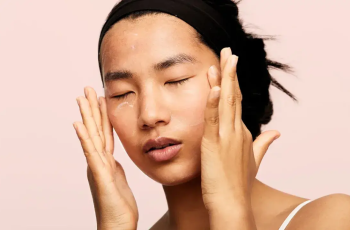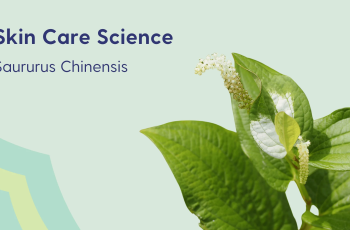
Who among us doesn’t mix skincare products these days? Sure, it’s a popular practice, but there’s a right way to do it.
We spoke to the pros to find the best combination. Your skincare routine is primarily about two things: what your body needs and your personal preferences.
Some companies take a minimalist approach, limiting their offerings to three or four products.
Then there are the skin maximalists, who use entire cabinets filled with jams, jellies, creams, and serums twice a day to achieve the radiant skin they desire.
Whatever approach you choose, one thing is for sure: People are paying more attention to the ingredients in their skincare than ever before.
As Wassim Taktouk, a board-certified dermatologist in London, explains to Allure, this development is thanks to social media.
“Social media has led to a rapid increase in consumer knowledge of skincare ingredients. Now, when patients come to me, they have a much better understanding of what ingredients can do,” he says.
“They ask me about niacinamide and ceramide, and before, I always told them about those first.” Now that people know what these ingredients really do, they’re looking for ways to combine them to create the best skincare routine—using an approach called skincare cocktails.
What is a “skincare cocktail”?
Unlike a delicious drink, the ingredients in a skincare cocktail should not be mixed before use. This could compromise the ingredients or even cause irritation, defeating the purpose of the method.
Instead, “skincare cocktails mean using and/or combining multiple products in your skincare routine to address different concerns,” says Shani Darden, a Los Angeles-based esthetician. This allows each customer to tailor their routine to their skin.
“Mixing offers the consumer the added benefit of using multiple products (rather than just one),” cosmetic chemist Ron Robinson tells Allure. “It’s both tailored and practical.”
Once you start layering, as a rule of thumb, apply each product in order of texture. “Start with your toner or serum and finish with your oiliest or most nourishing product,” advises Dr. Taktouk.
Best Combinations
Like rice and beans, chocolate and peanut butter, some skincare ingredients pair perfectly together. “I’m a big fan of layering products with complementary active ingredients,” explains Dr. Nina Desai, a board-certified dermatologist in Manhattan Beach, California.
“For example, brightening products with ingredients like alpha-arbutin or tranexamic acid work really well in combination with products that contain exfoliants like glycolic acid.”
Dr. Lindsey Zubritsk, a board-certified dermatologist in Pittsburgh, Pennsylvania, says her favorite combo is combining antioxidant ingredients like vitamin C with sunscreen. This technique increases protection against oxidative stress and UV radiation.
She also recommends combining a retinoid with a moisturizer for enhanced hydration, since retinol can dry out the skin. She also suggests combining niacinamide with hyaluronic acid to hydrate the skin.
Whatever our experts suggest, you should talk to your doctor about which product combination is best for your skin.
Ingredients You Should Avoid
Just as there are ingredients that work well with one another, there are also some that don’t. “I don’t recommend stacking powerful active ingredients, such as mixing retinol with an alpha hydroxy acid (AHA) or beta hydroxy acid (BHA), because that can cause irritation,” warns Dr. Desai.
“I find this combination to be overly drying and irritating.” Also, avoid using benzoyl peroxide with other active ingredients in leave-on products like moisturizers or serums. According to Desai, these ingredients rarely work well with each other.
The general rule is to always combine soothing ingredients with sensitive ones (you know, the ones that make your face sting). “For example, combining retinol with a soothing facial oil can alleviate the dryness and irritation that retinol can cause,” says product developer Ziad Halub.
He also warns against using two different products with the same active ingredient because of the risk of overdose, damage to the skin barrier, and sensitization.
Cosmetic chemist Ginger King recommends using a moisturizer or serum with a high concentration of hyaluronic acid or soothing ingredients like licorice extract when using regenerative ingredients like retinol. This will help avoid dryness and irritation.
Don’t Overdo It
When you were a kid, your mom probably told you, “Too much is useless,” and that applies to skincare, too. Skincare ingredients are powerful, okay? So use with some ingredients sparingly and with caution.
“Too many active ingredients, like exfoliating acids and retinoids, can compromise the skin’s moisture barrier, making it prone to redness and inflammation,” explains Robinson.
If you have skin irritation, you should use a chemical peel. “Before applying irritating active ingredients, focus your skincare routine on moisturizing ingredients,” advises Dr. Zubritsk.
“I recommend a creamy moisturizer that’s rich in ceramides—it helps restore and strengthen the natural moisture barrier and soothes the skin.”
When using active ingredients, it’s also important to space out product application. “I always recommend alternating active skincare products at night,” explains Darden.
For example, if you’re using a retinol treatment and an AHA/BHA peel, “doing the treatments on alternate nights will maximize the benefits of each treatment.”
Cocktails and Skin Diseases
If you’ve been diagnosed with a skin condition like acne, rosacea, or eczema, it’s important to be gentle in your daily routine. “Anyone who suffers from irritation or sensitivity needs to be very careful when using active ingredients,” Darden warns.
“It’s not that you can never use them, it’s just that you may not be able to use them as often as others.
I highly recommend introducing new active ingredients into your skincare routine slowly, one at a time, so your skin can get used to them.”
After all, you don’t want your skincare routine to make your skin feel worse. That would be a waste of time and money, wouldn’t it? That’s why it’s extremely important to consult an expert if you know you have skin issues and want to get the most out of your cocktail.
“These skin types already have a compromised skin barrier, and the wrong combination of ingredients can further damage them,” explains Dr. Zubritsk. “If you have any questions, a dermatologist can help you tailor your skincare routine to your individual needs.”
Yes, your dermatologist is your best friend—be sure to talk to him or her before you dive into the world of cocktailing. “Less is more in this case, and I wouldn’t recommend a cocktail unless your expert recommends something very gentle and supportive,” says Joanna Czech, an esthetician in New York and Dallas.
Skin-Cocktail Examples
Everyone’s skin-care routine and every concern is unique, but there are some ingredients that are universally beneficial. “Must-haves include adequate sunscreen (broad-spectrum SPF 30 or higher) and humectants (hyaluronic acid, glycerin, and/or ceramides),” Robinson tells Allure.
Below, we’ve compiled seven skin concerns and ingredients to look out for when shopping for cocktail ingredients.
Concern: Dehydrated Skin
Key Ingredients: Hyaluronic Acid, Phospholipids, Linoleic Acid, Glycerin, Ceramides, Jojoba Oil, Humectants, PHAs, and AHAs.
Concern: Fine Lines and Wrinkles
Key Ingredients: Retinol, Vitamin C, Glutathione, Ceramides, Peptides, SPF, and Exfoliating AHAs, BHAs, or PHAs.
Problem: Oily combination and acne-prone skin
Key ingredients: Hyaluronic acid, vitamin C, niacinamide, bakuchiol, sun protection factors and exfoliating acids such as glycolic, salicylic, lactic and mandelic acids.
Problem: Dry skin
Key ingredients: Rosehip oil, squalane, snail gel, fatty acids, hyaluronic acid, ceramides, SPF 30, glycerin and PHA.
Problem: Pigmentation
Key ingredients: Retinol, vitamin C, licorice extract, kojic acid, arbutin, niacinamide, glycolic acid, tranexamic acid and SPF 30.
Problem: Dullness
Key ingredients: Vitamin C, vitamin E, niacinamide, hyaluronic acid, caffeine, green tea extract and exfoliating acids (lactic, glycolic and salicylic).
Problem: Sensitivity and redness
Look for ingredients like: Centella asiatica, prebiotics, aloe vera, PHA, ceramides, azelaic acid and niacinamide.

